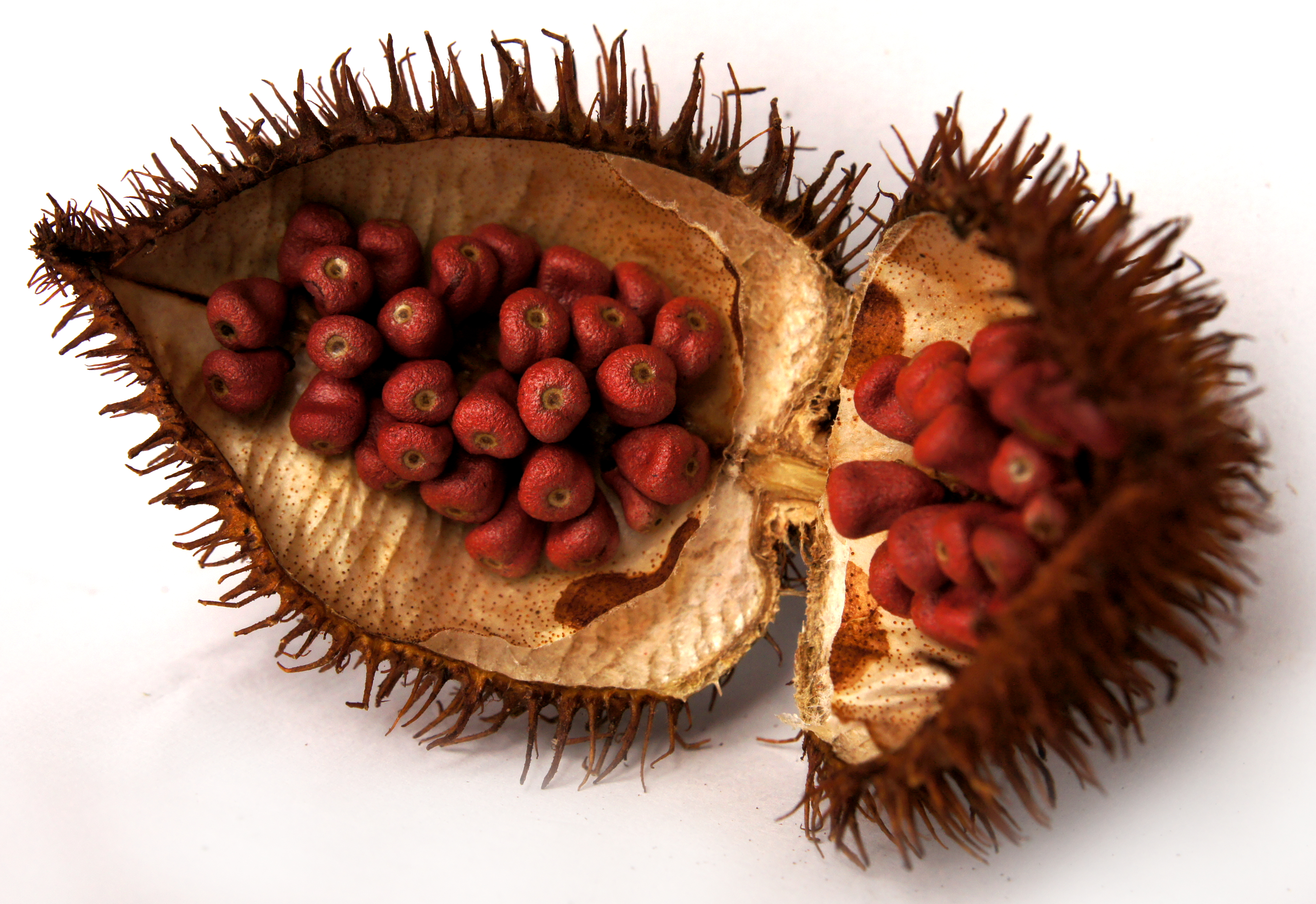Exotic seeds used as sustainable bio-factory
The exotic annatto tree produces the naturally orange pigment bixin and other useful compounds. Scientists from Aarhus University are participating in a new project for making the plant a more effective and sustainable pigment bio-factory.

The red seeds of the exotic prickly fruit from the annatto tree (Bixa orellana), also called the achiote tree, are bursting with colour and health. The seeds have for centuries been used as a dye for food, hair and skin. The seeds contain the pigments bixin and norbixin that belong to the carotenoid group of pigments. These natural pigments are to this day used as an orange-red food colouring to foods such as cheese, sausages and cakes. The seeds are also naturally high in antioxidants.
About 30 percent of the colourings used in food and beverages are natural. The main reason that the percentage is not higher is that natural colourings are expensive and somewhat less stable. A joint project between the ingredients company Chr. Hansen and scientists from Aarhus University and the University of Campinas in Brazil is aiming do something about that. They have started a partnership with the aim of developing the commercial cultivation of annatto and the extraction and use of its useful substances, including the pigment bixin and a number of antioxidants.
There is economic potential in increasing the yield of bixin from the annatto tree. The global market for natural food colourings is growing by more than 10 percent a year and is currently worth 700m euros, half of which is the value of carotenoids.
Naturally low pigment content
The plant that produces the bixin-containing seeds grows naturally in South America and has its genetic centre in Amazonas. It is grown commercially in several countries with a view to extracting bixin and norbixin from the seeds. In the wild the seeds contain up to two percent of these carotenoids. The cultured seeds normally have a carotenoid content of one to five per cent, at best.
One of the goals of the research project is to increase the content of the bixin and norbixin carotenoids in the cultivated plants to 8-10 percent. This will be done by systematically collecting, characterising and screening the different genetic variants of the tree in the wild with high levels of bixin and antioxidants and different combinations of carotenoids.
On that basis, Chr. Hansen and the scientists will be able to optimise the breeding of new varieties. The scientists will also screen the plant seeds for their content of other carotenoids such as lycopene and natural antioxidants such as vitamin E. The goal is to breed varieties with a high content of bixin in combination with a low tree growth, high yield and good disease resistance.
Improving specifications
The carotenoids bixin and norbixin are sensitive to light and heat and only moderately water-soluble. This can make them difficult to handle in the food industry. Therefore, the project participants from Arhus University – where the two PhD students Amita Jahangiri and Anders Hauer Møller are the driving forces – will in cooperation with Chr. Hansen develop novel formulations to increase the stability and functionality of these pigments and antioxidants.
With this project Denmark can strengthen its leading market position in natural colourings and Brazil can become the world's largest producer of annatto.
The project is a collaboration between the ingredients company Chr. Hansen (project leaders), Aarhus University and the University of Campinas in Brazil. The four-year project has a total budget in Denmark of 9m DKK, of which Innovation Fund Denmark is contributing 6m DKK.
For further information please contact: Associate Professor Trine Kastrup Dalsgaard, Department of Food Science, email: trine.dalsgaard@food.au.dk, telephone: +45 8715 7998
